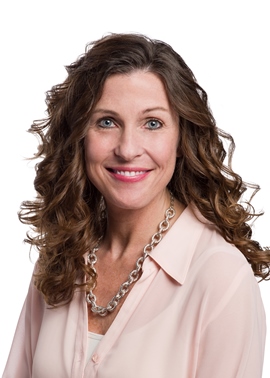Conversations with corporate researchers
Kristin Guthrie
Vice President, Customer Experience, Honeywell
Editor’s note: Kristin Guthrie was a speaker at the Quirk’s Event 2016, where she presented the top rated session, according to the attendee survey.
Are there any research methodologies that you feel are overlooked by others in the MR industry?
 I’m a big fan of using max-diff. The results are easy to interpret and communicate, as they can be placed on a 0-to-100-point scale, and sum to 100. It’s a great way to measure the relative priority for a large set of attributes. What are customers willing to trade? The results make it much easier for us to take action compared to a standard ranking or rating scale.
I’m a big fan of using max-diff. The results are easy to interpret and communicate, as they can be placed on a 0-to-100-point scale, and sum to 100. It’s a great way to measure the relative priority for a large set of attributes. What are customers willing to trade? The results make it much easier for us to take action compared to a standard ranking or rating scale.
How are you using secondary research to influence your organization?
In Honeywell’s Air Transport business, we work directly with both OEM customers – aircraft manufacturers – and end users – airline operators/aftermarket. We are fortunate that many of our OEM customers collect satisfaction data from the airline operators. So we are able to combine their data with our primary research to build a robust 360-degree view of how we’re performing – from both a supplier and aftermarket perspective.
In fact, we now import this secondary research into our CRM system, Salesforce.com. We’ve created a dashboard that incorporates our primary research with the OEM survey data and builds a health scorecard. It provides an at-a-glance visual display of where we need to focus in order to improve the health of our relationship with each customer. The dashboard is tied systematically to a get-well plan that is actionable and traceable.
How have you applied research to add a human element to the B2B environment? What changes have you seen since implementing?
I use a lot of consumer behavior research and cognitive psychology studies to emphasize the impact of soft initiatives. By soft initiatives, I mean any effort that focuses on how it feels to do business with our company. The tone we use, the words we choose or the manner in which we convey information. It all matters. And there’s science and data to back it up. So the discussion changes from, “Here’s what I think we should do – trust me,” to “Here’s what I think we should do and why I know it’ll make a difference.”
For example, we now proactively seek photos of our customers and add them to our CRM system. The genesis of this initiative was a study conducted by the Radiological Society of North America. In this study, researchers measured the impact of adding patient photos to their files. Results showed that the radiologists were more meticulous in reading medical image outcomes when a photo was part of the patient file. They went above and beyond what they had been asked to evaluate. That’s exactly what I want to encourage our customer service representatives to do – to go above and beyond what a customer specifically requests. To consider the customer on the whole rather than as a transaction. By adding customer photos to our CRM system, we hope to achieve this psychological shift.
What do you see as the biggest challenge to B2B MR today?
Ensuring that we are reaching a broad swath of personas within each company. In B2B, you can’t solicit feedback from a single individual. Depending on the topic, we might need to gather input from 10 to 20 different influencers and personas from a single organization. Building a representative sample is critical.
What led you to a career in marketing research?
I love the marriage of data and creativity. Marketing, to me, has never been about making something pretty or clever for the sake of being clever. Instead, it’s about digging deep to understand what’s important to customers. It’s about listening and then taking action. Market research is one of the best ways to listen and learn from a large group of customers. It’s fascinating to then turn that same raw data into highly effective and profitable campaigns – using imagination to enhance the science.
